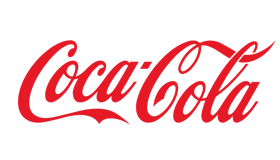Modelling Introduction of a new Coke Variant
CASE STUDY
First published June 2008
A Realistic Point-of-Sale experiment provided data to model the impact of introducting a new Coke variant.

The Project
This case study describes how a model of choice for pricing and packaging an FMCG product is created and how it can be used to:
- Introduce a new variant into a category
- Optimise pricing for each variant
- Estimate brand equity (in real dollars)
- Develop a strategy for competition and cannibalisation
- Calculate demand for products at different price points
Broadly, a choice experiment seeks to model how consumers make purchase decisions prospectively before the actual products are placed in the market. This allows great freedom in exploring pricing options that may not exist in sales data as well as disruptive and exotic marketing concepts. A choice experiment almost identical to a clinical trial. Real subjects are given hypothetical “treatments”. Subject’s behaviour usually purchases intention, is recorded for each “treatment” they are given. In this way, highly accurate models of consumer decisions can be made.
This choice experiment study shows how such a choice experiment was used to model the introduction of a mid-sized Coke in a plastic container to the market and how that model was used to support its retail price point.
Step 1: Setting the choice context
As the model sought to predict the choice of purchase of mid-sized Coke over competitors and other Coke products, it was decided that in the experiment would be a realistic-looking fridge stocked with typical cold beverages as might be found in a corner store. The subject’s decision context was then simply, “imagine it is a hot day, you walk into a corner store to buy a cold drink”.
Step 2: Determine the attributes and levels to be tested
Only two attributes of the new Coke product were of interest. These were:
Size: 450ml, 500ml, 600ml
Price: $2.30 to $3.99
Step 3: Define the choice alternatives
For a realistic model, all the other choices a consumer could make needed to be included, these were:
Competitors: Pepsi, PepsiMax, Mountain Dew, Solo etc.
Coke variants: Coke glass 375ml, Diet Coke glass 375ml etc.
Choose None: in the case where none of the options is desirable
Step 4: Create a realistic mockup
Store visits were made to develop a brief for graphic designers to build a realistic mockup of a soft-drinks fridge that could stand-in for the real thing in an experiment.
Step 5: Build the experiment
An optimal experiment plan was created from the price and size attributes. The plan itself is a smaller set of all the prices and bottle sizes combinations. This set is selected in the same manner as a clinical trial such that each factor can be independently modelled.
Using the plan and the mockup fridge layout, an online experiment was created using the SurveyEngine system. Some additional demographics and Usage and Attitudinal questions were also added for validation and additional insights of the experiment subjects.

Step 6: Collect the data
The Panel provider, PureProfile, was engaged to provide a Nationally representative sample of 5,000 respondents from the national population, balanced by gender, age, state and income. Respondents were invited by PureProfile account managers and offered an incentive for their participation.
Step 7: Model the data and interpret the results
Once 5,000 respondents had completed the experiment, the data was modelled and a model of choice was developed.
The model itself is not a single output, but rather a dynamic description of how consumers would choose the new hypothetical product. The Strategy team were able to interrogate to the model in several ways to develop the optimal packaging and price point for the new product, such as:
a. Price elasticity
How sensitive were consumers to changes in the price of the new product? How many units would be sold at $3.15?
How much market share would be lost by an increase of 50 cents?
b. Identify optimal bottle size
What was the mode profitable combination of size and price?
c. Cannibalisation
How much market share would the new product take away from existing coke variants? How would existing variants’ prices need to be altered to increase overall category share?
d. Competition
How much market share would the new product take from competitors?
Client OutcomesFor commercial-in-confidence reasons it is not possible to comment on the success of this pricing study other than information that is publicly available:
- MidSize Coke variants were introduced into the Australian market following this project.
- CocaCola Australia continues to be a highly profitable and successful company routinely using Choice Modelling to optimise its product mix.
Client outcomes
For commercial-in-confidence reasons it is not possible to comment on the success of this pricing study other than information that is publicly available:
- MidSize Coke variants were introduced into the Australian market following this project.
- CocaCola Australia continues to be a highly profitable and successful company routinely using Choice Modelling to optimise its product mix.
Declaration: This case study describes only the pricing and packaging methodology for models created for CocaCola Australia. Actual results remain the property of CocaCola Australia and are not reproduced. This methodology is protected by US Patent and the Patent Cooperation Treaty (USPA 13/882867) held by SurveyEngine Pty Ltd. Methods described here may be distributed for business development purposes but must retain this declaration without alteration.